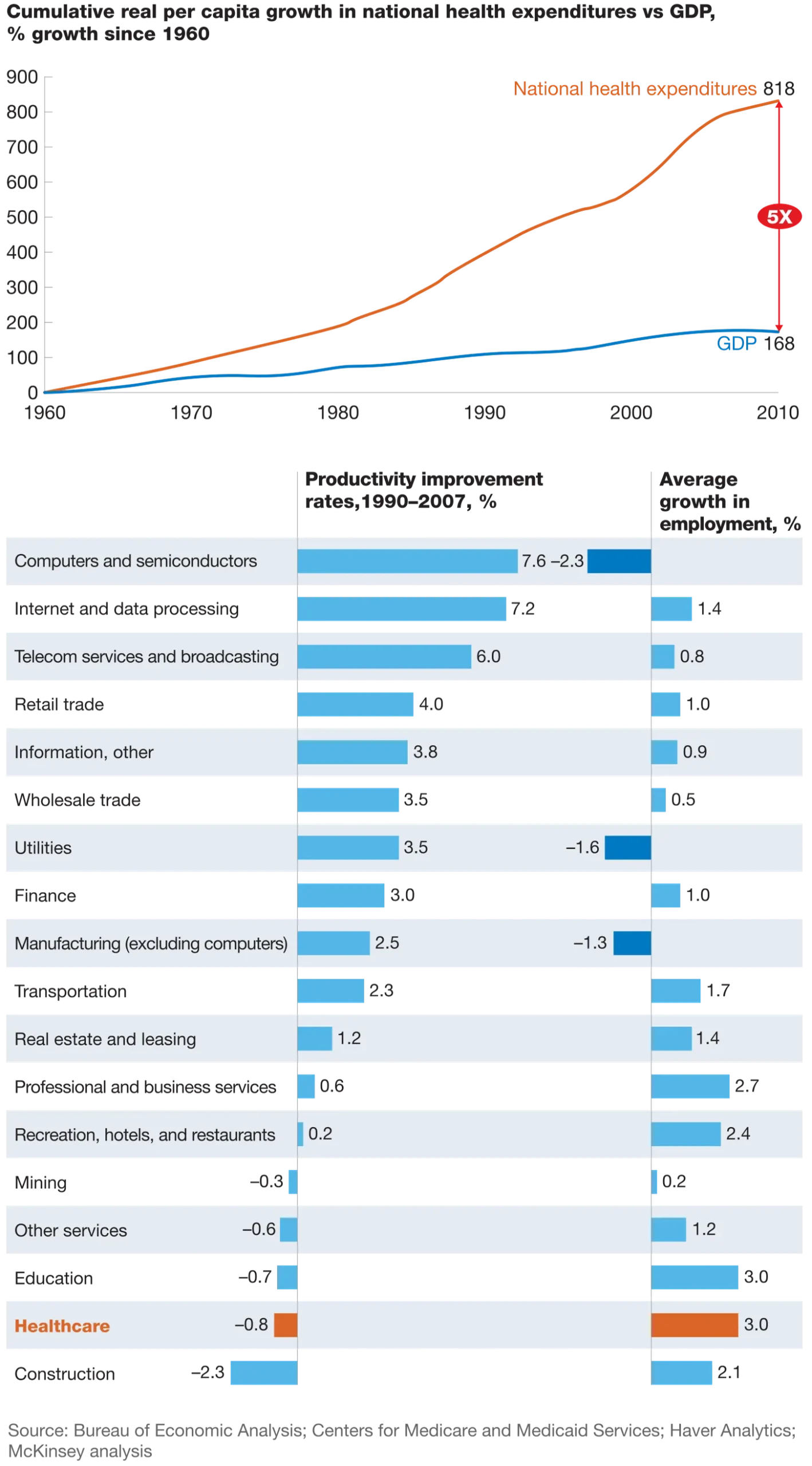Welcome to the inaugural post of “Rubin Reflects” under our eye-opening theme, “Believe it or Not.” In this series, we’ll dive into the most astonishing “surprises” in healthcare and medicine, shedding light on the unexpected and the counterintuitive. Today, we tackle a revelation that might just redefine your perspective on the healthcare industry’s productivity compared to other sectors.
Productivity, defined as the amount of goods and services a worker produces per hour of work, has been a lingering economic concern in the healthcare sector1. When we think of healthcare, we often envision cutting-edge technology, groundbreaking medical research, and a relentless pursuit of improved patient outcomes. However, despite these advancements, healthcare’s productivity growth remains a topic of intense debate and concern. Since 2004, productivity in healthcare has been expanding at its slowest clip in the post-war era1. Surprisingly, when compared across various industries, healthcare’s productivity growth rates are alarmingly low, with only one sector trailing behind it: construction.
Yes, you read that correctly. According to a study by the McKinsey Global Institute, healthcare and construction are the two sectors with the lowest productivity growth, with healthcare only marginally outperforming construction. This is particularly startling given the rapid technological advancements and significant investments poured into the healthcare sector annually. So, why does healthcare, a sector synonymous with innovation and life-saving breakthroughs, find itself in such an unexpected position?

Several factors contribute to this paradox. Firstly, the inherent complexities of healthcare, with its multifaceted stakeholder landscape and the critical nature of its services, pose unique challenges to productivity measurement and improvement. Unlike manufacturing or retail, where output can be easily quantified, the “products” of healthcare are less tangible and more varied, encompassing everything from surgical procedures to long-term chronic disease management.
Moreover, regulatory requirements, the necessity for personalized care, and the ethical imperative to prioritize patient safety above all add layers of complexity that often slow down efficiency gains. Additionally, the sector’s heavy reliance on skilled professionals who provide bespoke services can limit the scalability and standardization typically associated with productivity improvements in other industries.
Low productivity in healthcare has real-world consequences. It not only increases the cost of healthcare but also puts U.S. businesses at a competitive disadvantage with businesses located in countries with healthier people3. Moreover, it exacerbates workforce shortages, which have real-world consequences in patient outcomes
The comparison with construction is particularly intriguing. Like healthcare, construction is characterized by its labor-intensive nature, high regulatory burdens, and the bespoke nature of its output. Both industries face significant challenges in implementing standardization and automation — key drivers of productivity growth in more rapidly advancing sectors.
So, what can healthcare learn from this comparison? First and foremost, it highlights the urgent need for systemic changes to enhance efficiency without compromising the quality of care. Embracing digital transformation, leveraging data analytics for informed decision-making, and fostering a culture of continuous improvement are pivotal steps toward accelerating productivity growth.
Innovative healthcare models that integrate telemedicine, AI-powered diagnostics, and personalized medicine can also play a crucial role in enhancing efficiency while delivering superior patient outcomes. Moreover, rethinking care delivery processes, optimizing supply chain management, and investing in the continuous education and training of healthcare professionals are critical for driving productivity gains.
On a positive note, one of the recent “surprises” in healthcare has been the implementation of the No Surprises Act5. This act, which went into effect on Jan 1, 2022, protects privately insured patients from surprise medical bills5. This is a significant step towards making healthcare more transparent and patient-friendly5
In conclusion, while the slow pace of productivity growth in healthcare might be surprising, it also presents an opportunity for transformative change. By understanding and addressing the unique challenges of the sector, healthcare leaders can unlock new avenues for improvement, ensuring that the industry not only keeps pace with but also sets new standards for innovation and efficiency.
Stay tuned for more thought-provoking insights in our “Believe it or Not” series, where we’ll continue to explore the unexpected and the astonishing in the world of healthcare and medicine.
References: 1 Understanding US productivity trends from the bottom-up1 4 Health Care Has a Purpose and Productivity Crisis4 2 How Should We Define Productivity In Healthcare?2 3 The U.S. Health Disadvantage and Why It Matters to Business3 6 Did health care productivity really decline in recent decades?6 5 Surprise Medical Bill Ban Now in Effect: What to Do If You Get One5



0 Comments